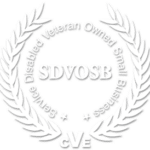Technical scheduling is a vital aspect of project management. It allows for the development of a baseline schedule, which outlines the sequence of activities required to complete a project within a specified timeframe. However, there are common mistakes that project managers make when developing and updating schedules. In this blog, we will discuss the most common mistakes and how to avoid them.
Open-ended or “Dangling” Logic
The first and last activity in a schedule are unique in that they do not have predecessor or successor activities, respectively. Every other activity in a schedule needs to be connected to the entire network of activities. However, contractors often fail to check their activity network to remove any open-ended activities, known as a “dangler”. Danglers cause the free float and total float calculations to be incorrect. Scheduling software contains tools to help schedulers spot these mistakes and remove them before they are submitted for acceptance.
To avoid this mistake, project managers should ensure that each activity has a predecessor and successor activity, except for the first and last activities in the schedule.
Excessive Use of SS or FF Relationships
There are four types of activity relationships in schedules: Start-to-Start (SS), Finish-to-Finish (FF), Finish-to-Start (FS), and Start-to-Finish (SF). Each relationship type is used for different types of sequencing. Contractors often use SS or FF relationships for concurrent activities, allowing work to be shown on the schedule at the same time, either starting or finishing on a certain date.
When compressing a schedule to fit a given timeframe, it’s easy for schedulers to add in SS or FF relationships as a quick way to hit a date without adjusting more complex elements of the overall schedule. Excessive amounts of SS or FF logic make every activity “critical”. Scheduling best practices dictate that SS or FF logic ties make up no more than 20% of your overall schedule. Project managers should check their scheduling specifications for further clarification, as they will often limit the use of this type of logic.
Missing Activity Calendars
Scheduling specifications will clarify the number of days that need to be incorporated into your schedule. Scheduling software allows for activities to be tracked using individual calendars for things like calendar days (submittals), weather days (construction activities), holidays, etc. Contractors have a tendency to neglect these calendars, not understanding their importance.
For example, a calendar for asphalt (dates when the asphalt plants are closed) in the North Eastern United States can be very useful. It acts to block out dates in your schedule when you could not otherwise lay asphalt. Without this calendar, an initial baseline schedule may not take those closure times into account, and your schedule may show you laying asphalt in the middle of January.
To avoid this mistake, project managers should make sure that each activity is assigned to a specific calendar so that they can avoid incorrect delivery dates, working days, or other problems.
Visual Clutter
Schedules inherently communicate a lot of information at one time, making them prone to visual clutter. While this information is helpful, it can often be overwhelming. To keep schedules looking professional, project managers should use print templates to their advantage for individual reports. For baseline schedules and monthly updates, they should pay close attention to each document.
Examples include:
- Omitting excessive lines on the Gantt chart by toggling relationship lines off.
- Changing the display of activity names/numbers to display above the activity itself on the Gantt chart.
- Adjusting the timescale of the Gantt chart to better represent the full duration for the time that you want to communicate (weeks/months/years).
- Editing and hiding columns that may have been updated but are not relevant to reviewers.
- Duplicating reports while toggling on/off information as a way to communicate important information.
Technical scheduling is a critical aspect of project management and requires attention to detail, accuracy, and consistency. By following best practices and utilizing scheduling software tools, contractors can create effective schedules that accurately reflect project timelines and help ensure project success. As always, it is important to consult with scheduling specifications and project stakeholders to ensure that the schedule meets all project requirements and expectations. With proper planning and execution, technical scheduling can be a powerful tool for project management and help ensure project success. If you’d like to access some of our additional resources for scheduling help, click here.



